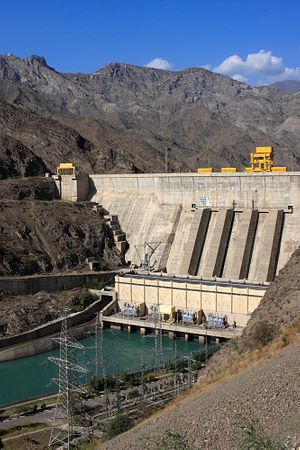Despite the economic implosion continuing to shake the post-Soviet sphere — as well as the new offshore leaks ringing both Russia and Kazakhstan’s leadership — the Moscow-led Eurasian Economic Union continues to limp on. Kazakhstani President Nursultan Nazarbayev recently insisted, contra Moscow, that the EEU remains purely economic. The EEU — and the grand plans entailed — may have largely dropped from Russian President Vladimir Putin’s rhetoric, but the group’s inertia continues, with regional officials offering lip-service to the grouping.
To wit, earlier this month Kyrgyz Deputy Prime Minister Oleg Pankratov floated the notion that his country would be interested in further EEU integration. As TASS related, Pankratov noted that Bishkek “is interested in taking part on the common energy market” in the Eurasian Economic Union, and exploring how the organization could allow Kyrgyzstan to “create conditions for the export of electricity.” As he added, “This is one of the most promising areas for our country.”
Pankratov’s rhetoric represents a surprisingly rosy outlook from Bishkek about the EEU’s opportunities moving forward. Just a few weeks back, as The Diplomat’s Catherine Putz noted, Pankratov had opined that “there is no alternative to the union.” When it comes to energy transit, however, Bishkek appears to be all ears.
Such a shift is perhaps less surprising, however, when viewed in light of the electricity issues that kicked off Kyrgyzstan’s year. Instead of acting as one of the linchpins of the CASA-1000 energy project, which would have seen Kyrgyzstan transit excess electricity southward, Bishkek has been forced to sign agreements on importing electricity from Kazakhstan — as well as deal with the fact that the country’s primary energy engine has begun showing its age. As RFE/RL’s Bruce Pannier recently wrote, Kyrgyzstan’s “main source of power — the Toktogul Reservoir and hydropower plant (HPP)- – had just shut down three of its four turbines for several days [at the beginning of the year]. An inspection determined the HPP was simply old and needed repair and upgrades.”
The search for external hydropower investors — in light of Moscow’s pullback — also continues, largely fruitlessly. As TASS added, though, Pankratov claimed that closer union within the EEU common energy market “will also attract significant investment for the construction of new generating capacity.”
Unfortunately for Bishkek, such a market, at least for electricity, will not come online until at least 2019. Likewise, as the German Institute for International and Security Affairs recently found, “Since Soviet times today’s EEU members have been connected by a shared transmission grid. But this network needs to be further expanded and above all comprehensively modernized.” As with most aspects of the EEU, any potential benefit Kyrgyzstan may accrue from the EEU’s common energy market remains heavy on rhetoric, but with a heap of questions — and investors who remain purely theoretical — to follow.

































